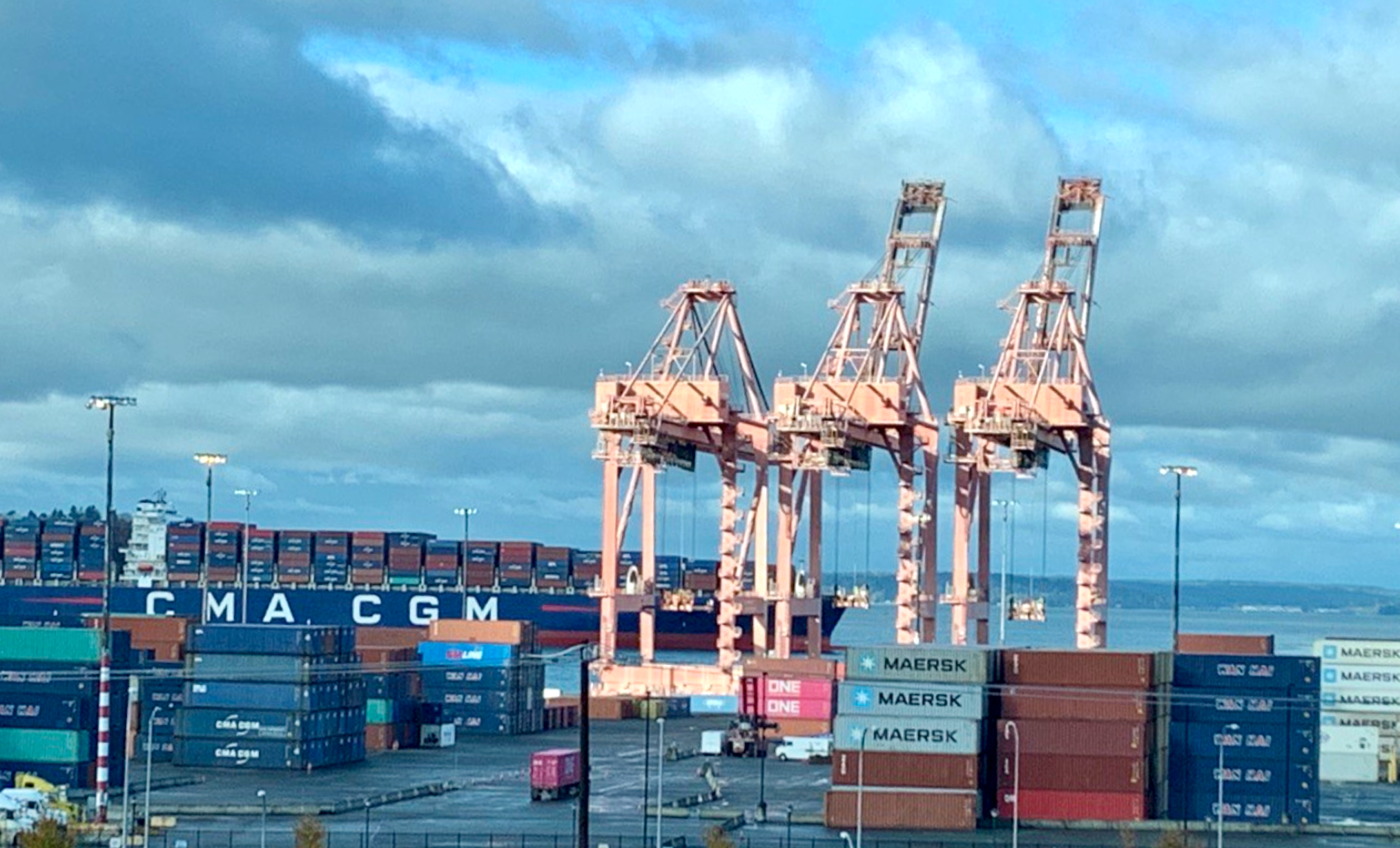A year after scrambling to stave off collapse, the ports of Seattle and Tacoma are dealing with too much of a good thing.
“We’ve rebounded in 2021 and you’ve probably heard about congestion…or if you’ve looked out the window,” John Wolfe, CEO of the Northwest Seaport Alliance, told the audience at the 2021 King County Maritime Economic Forecast breakfast Friday, overlooking a container-crowded Terminal 46 in Seattle.
With 53,400 jobs and $12.4 billion in economic impact, the twin ports are a pillar of the region’s economy. Now like other U.S. container ports, they are squeezing out a backup of imported goods.
“I see that as a good thing,” because most people previously have not understood how the supply chain works, Wolfe suggested.
“One of the reasons, as I look at it, is the industry has been under-investing in infrastructure,” said Wolfe. Publicly held companies are under such pressure to provide return on investment to shareholders and reduce their costs that distribution systems operating at “optimal” levels quickly deteriorated in the face of booming demand and supply constraints.
Terminal 5 in Seattle – the 185-acre site of a $400 million capital investment that will open to container ship arrivals in January 2022 – was pressed into service as parking for 3,000 empty containers to relieve crowding at other terminals, said Wolfe.
“We’re also working with importers to encourage them to pick up their boxes,” he said.
Seattle’s cruise ship traffic went from a $900 million annual trade to virtually zero for 2020 but is well on a rebound. With grain deliveries and recreational vessel traffic well above average for 2021, and commercial fishing and industrial moorage down only slightly, the port business “we’re headed in the right direction,” said Port of Seattle executive director Stephen Metruck.
Some $378 million in infrastructure planning includes replacing pilings, bulkheads and other improvements at the port’s facilities for large commercial fishing vessels, and developing Terminal 91 uplands into light industrial space to include fishing support businesses, said Metruck.
Converting the old fishermen’s supply to a new “maritime innovation center” is scheduled for completion in 2024. A submarine cable from Terminal 46 will carry shore power for Pier 66, Metruck said: “This is part of our effort to decarbonize the waterfront.”
A smaller carbon footprint is a selling point for Genuine Alaska Pollock Producers, and what Karl Bratvold, managing partner of the trawler Starbound and a GAPP director called “the most climate-friendly protein in the world.”
Bratvold and GAPP CEO Craig Morris recounted their past two years of marketing, when pollock from the Seattle-based trawler fleet won more customers as an essential home freezer item during the pandemic.
GAPP’s market research shows “sustainability” is a high-scoring value with U.S. consumers, and its marketing material now include graphic comparisons of emissions calculated for delivering beef, on the highest end of the scale, the Alaska pollock “which is about as low as you can go,” said Bratvold.
“That’s something we really have to be mindful of,” said Morris. The other key part of GAPP’s labeling, wild-caught, “means a lot to consumers,” he added.







